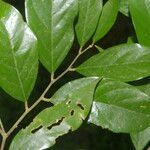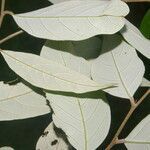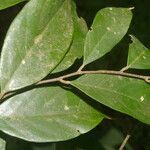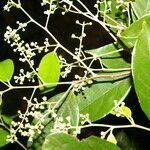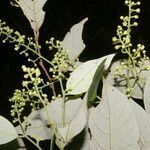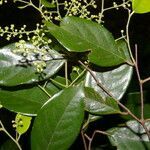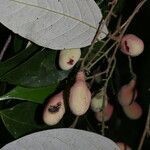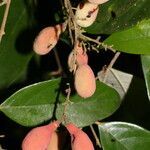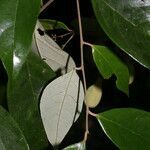Tree 10-15 m. tall, with a trunk-diameter of 10-40 cm., the ovate or lanceolate pointed leaves whitened beneath, the branchlets slender (1-2 mm. thick at the base of the inflorescences), nearly black, glabrate (in the juvenile state densely sordid-puberulent). Leaves ovate to lanceolate or elliptic, the upper surface lustrous and glabrous but the veins and veinlets in fully mature leaves marked with lines of tiny closely set papillae, the lower surface (appearing glaucous to the unaided eye because of the fineness of the tomentose layer) whitened with a dense appressed tomentum, the main lateral veins densely puberulent or thinly tomentose, arcuate, 6-8 pairs, prominent beneath, inconspicuous above (in dried material); blades acute to acumi-nate at tips, acute to rounded at base, 5-12 cm. long, 2-5 cm. wide, usually about 2-2.7 times as long as wide; petioles stout, about 1 mm. in diameter and 4-7 mm. long, densely short-hairy, the hairs on the upper side extending 2-4 mm. in a nar-row inverted V onto the base of the blade; stipules subulate, 1-3 mm. long, subper-
A tree. The fruit are reddish and pear shaped.
